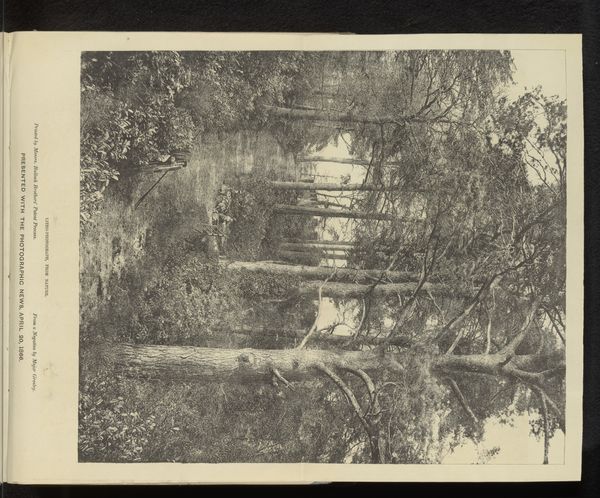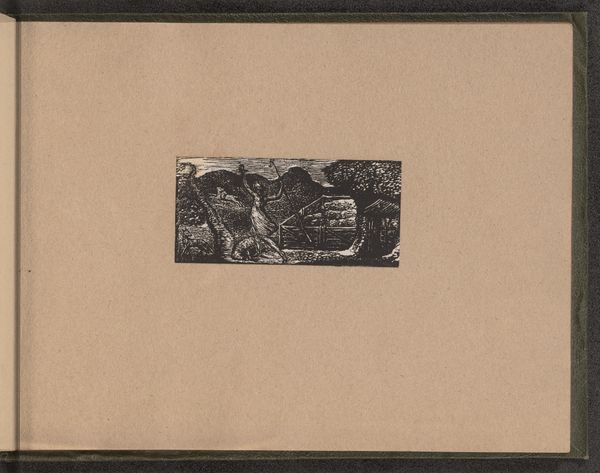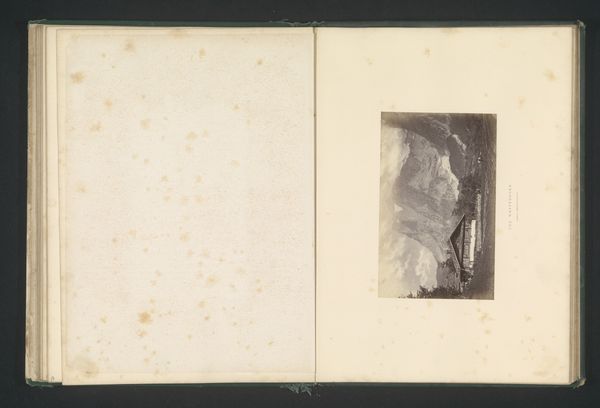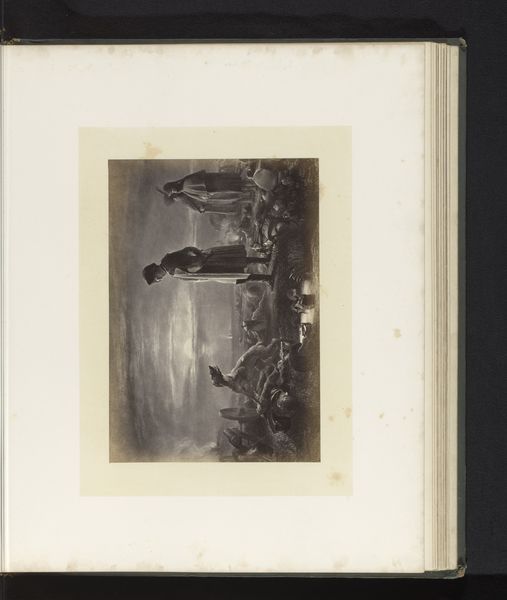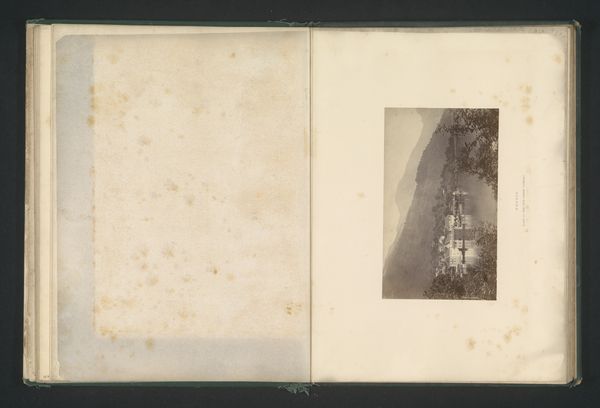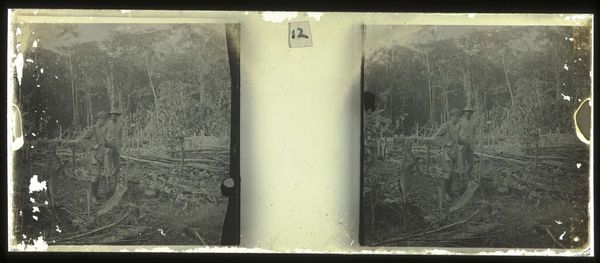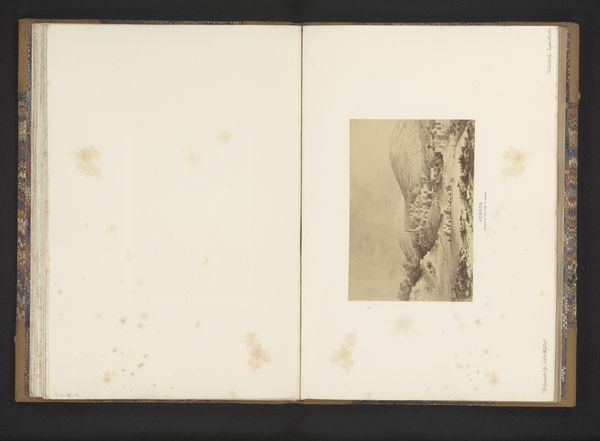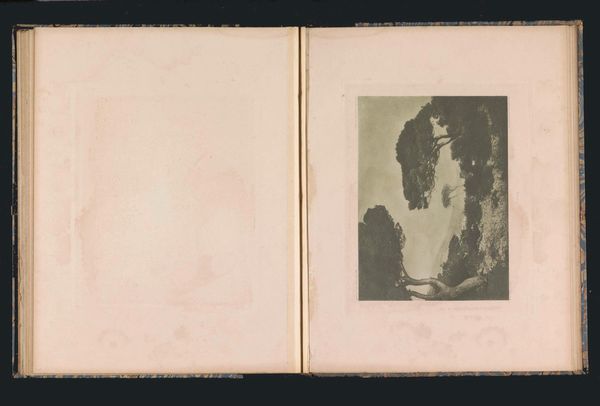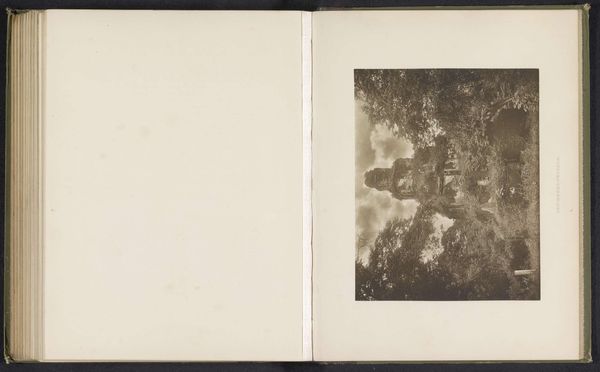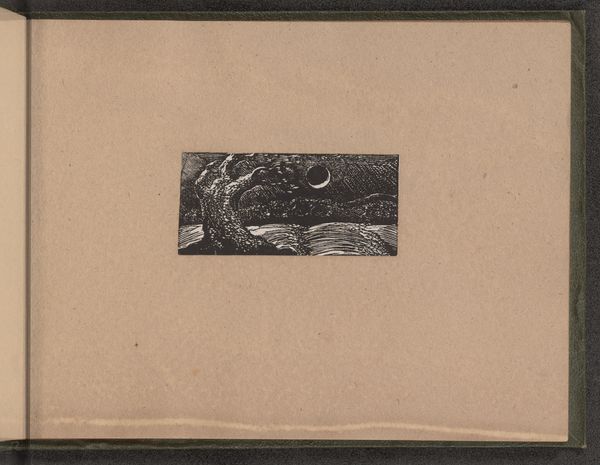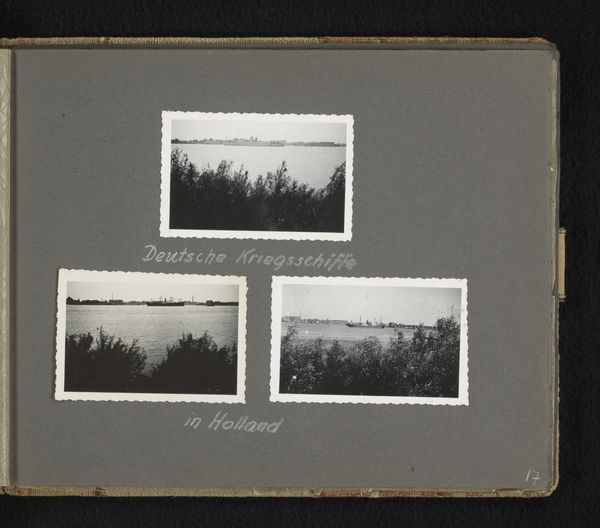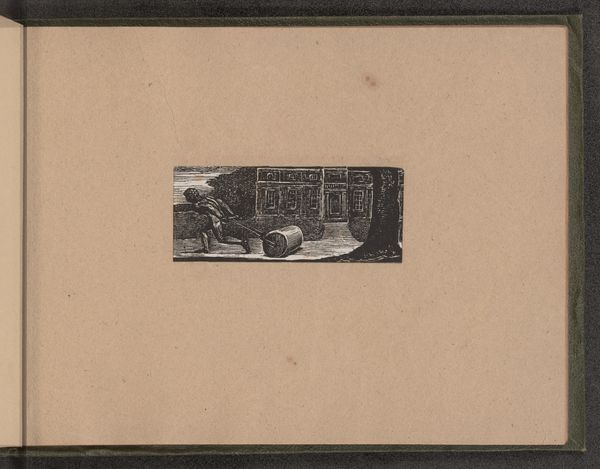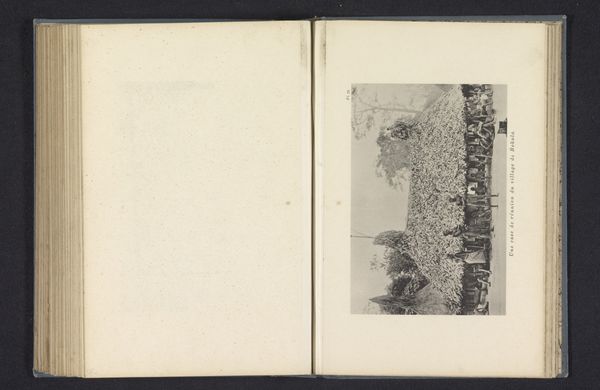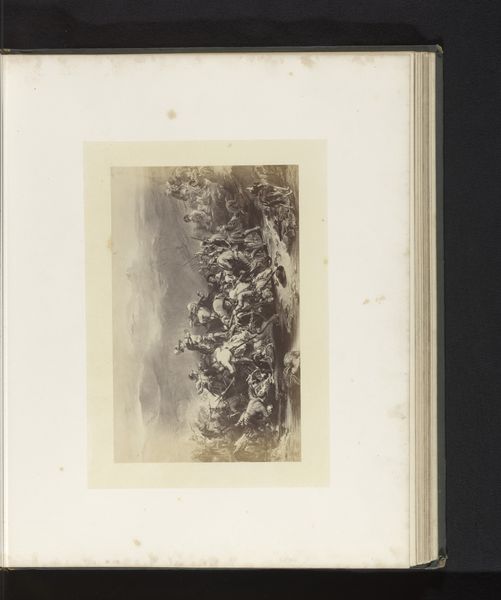
print, photography
# print
#
landscape
#
photography
#
realism
Dimensions: height 55 mm, width 57 mm, height 88 mm, width 178 mm
Copyright: Rijks Museum: Open Domain
Curator: This arresting image, held here at the Rijksmuseum, is titled "Tinmijn te Soengeiliat". Dating from between 1900 and 1922, it comes to us from the lens of Robert Julius Boers. What strikes you about it at first glance? Editor: A kind of claustrophobic grandeur, perhaps. The tight circular composition, surrounded by that rugged terrain, it feels like looking down into another world. Or maybe peering into the past, given the photographic style. Curator: Absolutely. This stereo photograph presents us with the realities of tin mining in Soengeiliat, likely in the Dutch East Indies at that time. As a stereo image, it was created to give the viewer a heightened sense of depth. What cultural values might it reflect? Editor: It speaks volumes about labor, the human cost of resource extraction during the colonial era. The way these workers are positioned—some quite literally clinging to the earth above, while others stand knee-deep within the excavation—really emphasizes that disparity. Were they indentured laborers? The photograph seems silent on these vital questions. Curator: The circular brick-lined well, though… for me it echoes the stepped structure of sacred wells found throughout ancient cultures, or maybe some Roman building practice. It's almost like a profane mimicry, isn't it? Consecrating the ground only to rip its wealth away for external purposes. Editor: A pointed observation. Yes, while the well may seem like an element of safety or structure, it's essentially facilitating exploitation. It’s a physical manifestation of colonialism, extracting resources and human effort with very little return for the local population. Do we know anything about how this photograph was received at the time? Curator: It seems these photographic prints were popular souvenir images. But the details of daily life also document the culture in a different way: look at the tools they are using. Or look at their clothing; the woven hats seem culturally significant. This offers glimpses into the intersection of technology and local ways. Editor: Precisely. By showing us so much about working methods of this period, these visual clues become precious social documents too. What might appear as simple souvenir image can really yield vital insights into that time. Curator: Yes. I come away reminded of how the mundane and the monumental can coexist, or how photographs often tell stories that remain out of focus. Editor: For me, the photograph emphasizes that we should interrogate imagery more often, looking past surface impressions and easy explanations to expose the politics of seeing.
Comments
No comments
Be the first to comment and join the conversation on the ultimate creative platform.

